Introduction
In modern sporting events, the spectator experience has long transcended mere spectatorship.
So, what makes sports stadiums such exciting venues? Afficheurs LED are undoubtedly a key factor.
They not only transform the way spectators view games but also enhance the vitality and value of the entire venue. Let’s explore the eight major advantages of LED displays in sports stadiums.
Table des matières
Advantage 1: Wide viewing area, covering the entire stadium
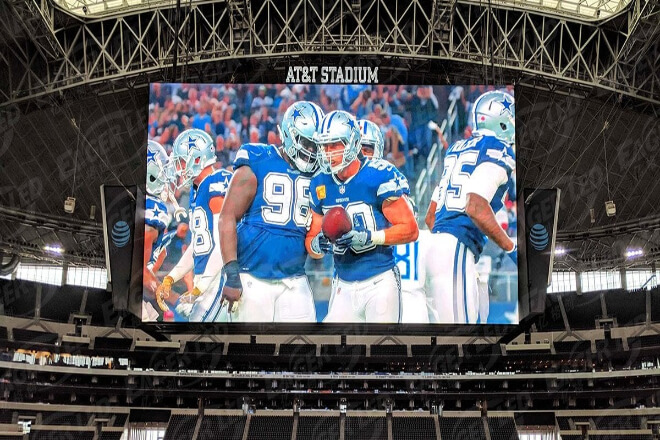
Anyone who has been to a sports stadium knows that seating can truly determine the viewing experience.
Those in the front row can experience the players’ fierce competition up close and personal, even hearing the clacking of sneakers on the floor.
But those in the back rows often only see a sea of heads, making it nearly impossible to discern key moves. LED displays act like a giant telescope for the entire stadium.
With their high luminosité and crisp image résolution, even those in the corners can capture the exciting moments magnified on the screen.
Even more importantly, their wide angle de vue allows spectators to see the screen clearly at any time without having to adjust their posture.
Whether it’s an outdoor arena under the glare of midday sun or a nighttime game with complex lighting, the picture remains vibrant, without glare or blur.
In other words, LED screens ensure that every viewer has the same level of experience—sitting in the front row is a blessing, and sitting in the back is no longer a regret.
Advantage 2: High-definition image quality for stunning detail
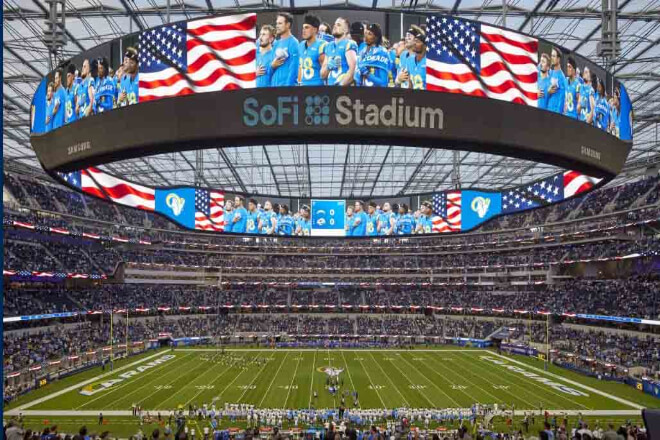
When watching a game at a stadium, the most heart-pounding moments are often fleeting: a player’s breakthrough, a goalkeeper’s diving save, even the excited cheers of someone in the stands can become the most memorable moments of the match.
LED screens, like a magnifying glass for the entire audience, bring these details to life with crystal clarity.
The screen’s high résolution allows for real-time playback of the action, with the ability to switch to slow-motion replays or close-ups at crucial moments, allowing everyone to experience the almost tangible excitement and tension.
Compared to conventional large screens or remote TV broadcasts, LED screens offer brighter images with richer colors, ensuring that no detail is missed due to seating far away or at an angle.
You can even see the sweat dripping down a player’s forehead or the gentle clack of sneakers scraping against the floor—small details like these are enough to let the audience feel the rhythm and intensity of the game.
High-definition image quality not only magnifies every point and every exciting play, but also heightens the atmosphere and allows viewers to fully immerse themselves in every moment of the game.
Advantage 3: Efficient and diverse information transmission
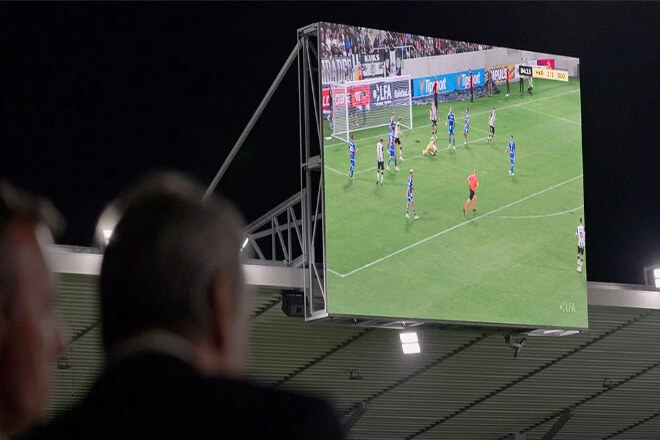
In a stadium, watching a game is more than just watching the game; spectators want to be kept informed of various information at all times.
LED displays act as the “smart eyes” of the stadium, displaying scores, game times, and player statistics in real time, eliminating the need to reach for your phone to check and ensuring you never miss a crucial moment.
In the event of an emergency, such as sudden rain, stadium safety alerts, or last-minute schedule changes, prompts pop up on the screen, providing clear information at a glance and minimizing panic.
For example, at Madison Square Garden in the United States, the large LED screens at NBA games not only display real-time scores and player statistics.
But also play slow-motion replays during timeouts, allowing viewers to see every detail of a player’s dribbling, shooting, and defensive moves.
Another example is London’s Wembley Stadium. During football matches, LED screens with multilingual subtitles allow fans around the world to stay up-to-date on match information, schedules.
And venue announcements, making it easy to follow the action even if they speak different languages.
Compared to traditional broadcasts or paper notices, this “look-up-and-see” approach allows viewers to access information at all times, perfectly preserving the intensity and rhythm of the match.
Advantage 4: Maximizing Advertising and Sponsorship Value
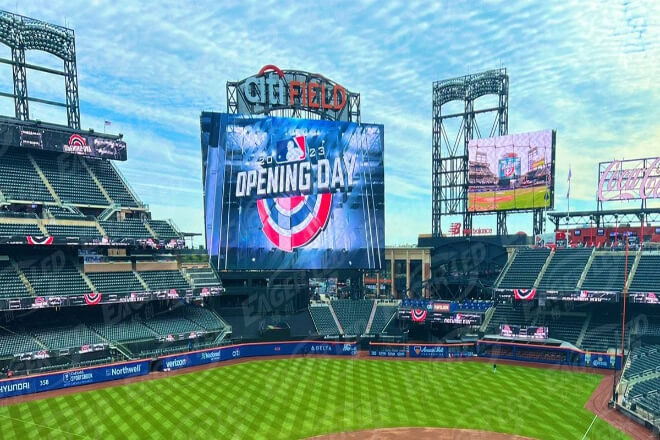
LED screens in stadiums not only allow spectators to enjoy the game but also provide sponsors and advertisers with excellent exposure opportunities.
The screens can simultaneously display dynamic ads from multiple brands, flexibly switching according to the pace of the game and time of day, giving each brand the opportunity to be seen by thousands of viewers.
More importantly, these ads seamlessly blend into the atmosphere of the game—for example, during crucial goals, highlight replays.
Or when the stadium lighting changes, the ads flow seamlessly, creating a memorable and effective impression.
For example, at the Staples Center in Los Angeles, during NBA games, LED screens display sponsor advertisements on a loop during pauses, interspersed with interactive mini-games and voting sessions to engage the audience.
This significantly enhances the exposure of sponsors compared to traditional print advertising.
This approach not only improves the sponsor’s return on investment but also seamlessly integrates advertising with the game experience, ensuring it doesn’t disrupt the action while leaving a lasting impression on the audience.
Advantage 5: Interactive Experiences Enhance Audience Engagement
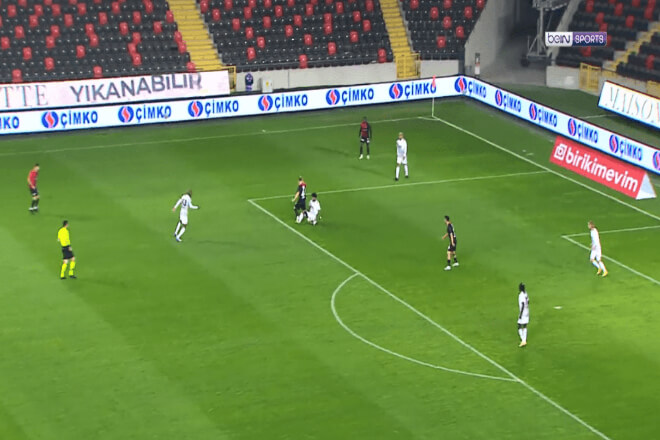
In modern sports stadiums, LED screens are more than just a tool for showcasing the game; they function as a dialogue channel with the audience.
Viewers can participate through their phones or social media, posting comments, voting for the best player.
And even displaying the cheers of the crowd in real time, allowing everyone to feel their own contribution to the game atmosphere.
Even more exciting, the LED screens can sync with the stadium’s lighting system, changing colors in response to the game’s rhythm and audience interaction, instantly filling the entire venue with a sense of dynamism and excitement.
For example, Madison Square Garden in New York City displays real-time fan voting results and social media interactions during NBA games.
The flashing barrage of comments and voting statistics on the screen gives viewers a sense of being part of the action.
In this way, LED screens not only provide information but also allow viewers to truly become part of the action, making every cheer visible and tangible.
Advantage 6: Durability and High Protection
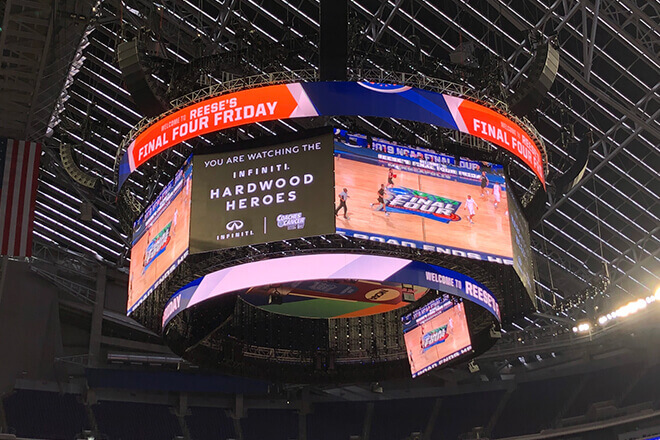
LED screens in stadiums face large crowds and are frequently used daily, making durability a top priority.
Modern LED screens are designed to withstand various challenges, featuring waterproof, dustproof, and impact-resistant features. They maintain reliable operation even in crowded and lively stadium environments.
From the scorching summer heat to the freezing winter temperatures, they maintain a stable display, unaffected by weather and temperature fluctuations.
LED screens are also relatively easy to maintain. Even minor issues can be quickly identified and repaired, significantly reducing the inconvenience caused by screen failures during games or performances.
It’s this high durability and strong protection that make LED screens a reliable “standout” in stadiums subjected to all-weather, high-intensity use, ensuring spectators enjoy a smooth, clear visual experience at all times.
Advantage 7: Flexible Installation and Adaptability
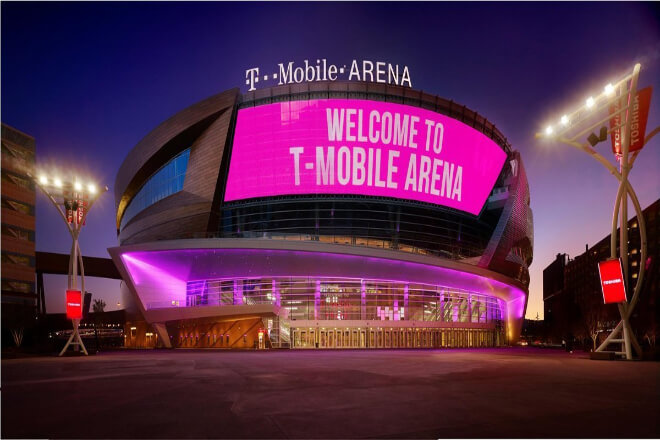
Sports venues host a wide variety of events and competitions. One basketball game might be followed by a music performance or other sporting event.
The flexible installation and adaptability of LED screens to various scenarios make this easy.
Whether curved, circular, or suspended, they can be freely combined to suit the venue layout and event requirements, ensuring both aesthetic appeal and visual fidelity.
For temporary events, mobile and removable rental LED screens are also available, saving space and enabling quick and easy setup and dismantling.
More importantly, these screens support rapid switching between content for different event modes—scores, game data, animations.
Or advertising—with simple operation, ensuring spectators experience smooth, context-sensitive visuals regardless of the event.
The flexibility of LED screens makes venue management less stressful and provides spectators with a more engaging viewing experience.
Advantage 8: Enhances the venue's overall brand and quality
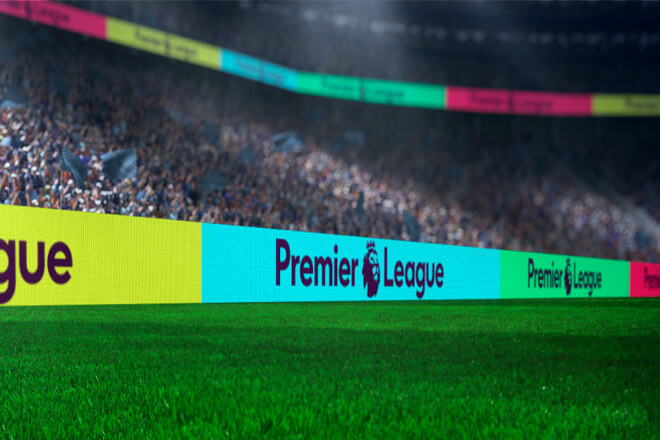
LED screens are more than just a tool for viewing games; they add a touch of class to the venue.
When spectators enter a venue equipped with a large, high-definition LED screen, they are immediately struck by the visual experience.
Imbued with a sense of technology and modernity, instantly conveying the venue’s professionalism and class.
For example, at London’s Wembley Stadium, the massive LED screen, combined with the stadium lighting, makes every football match a truly impressive and high-end experience.
At Madison Square Garden in the United States, the LED screens not only display scores but also carry advertisements, game highlights, and interactive content, creating a lively and modern atmosphere.
For large-scale international events or performances, LED screens that meet international standards are almost essential. They not only meet the demands of the competition but also attract more high-quality events.
Over time, LED screens can continuously enhance the venue’s commercial value—advertising, sponsorships, and exhibits can all be fully utilized, making the venue stand out from its peers.
It not only serves the event but also subtly cultivates a professional, modern, and vibrant brand image for the venue, allowing spectators and partners to sense the venue’s dedication and style.
9. Conclusion
Through the above eight advantages, we can see the importance of LED displays in sports venues.
It not only provides spectators with an unprecedented visual experience but also brings tremendous commercial value to venue operations.
So, is your stadium ready for this transformation?
Finally, for more information about LED displays, please Contactez-nous.
